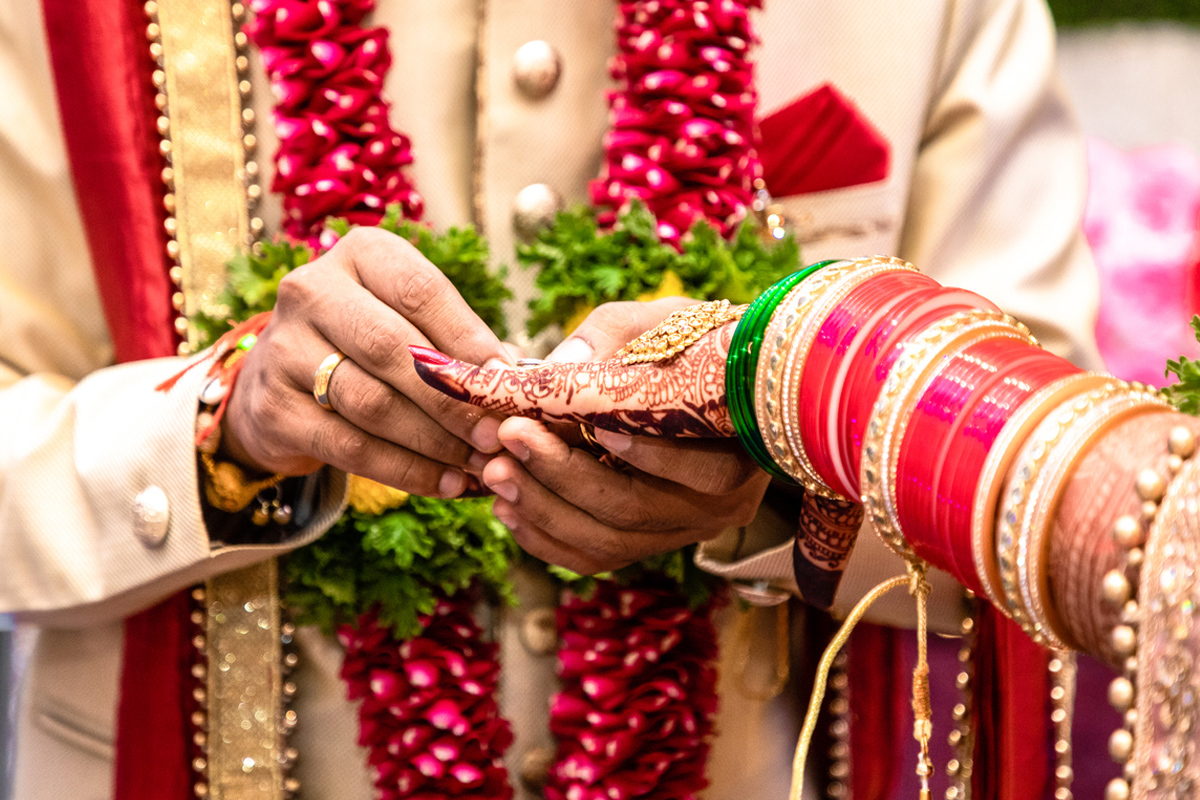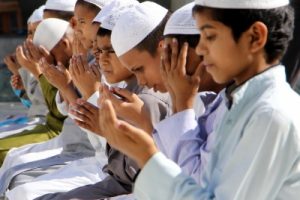J alebis or gulabjamuns? Maybe the gulabjamuns, as the queue at the live jalebi counter is long and I really cannot manage both, as the second (and totally unnecessary) helping of biryaniin my stomach is saying ENOUGH. Aah! The gastronomic dilemmas of Indian weddings compounded by the NRI greed for Indian food make it a real pleasure for me to attend Indian weddings. Throw in the sentimentality of meeting old friends, the joy of seeing children grow up and get married and the whole social whirl becomes an NRI dream sequence trumped only by the taste of butter-doused sarson ka saag cooked by someone else – yay, no housework today!
So, as I make my way to the buffet to help myself yet again, I find myself reflecting on the weddings I attended as a child andas a young girl. How utterly different they used to be! There were no wedding planners, just aunts and uncles who decided things and pitched in with their networks to help organise them. The best-placed uncle with the largest house used to loan his lawn for the wedding. The decorators were phoolwalas who turned up with their ”catch of the day” and their jaws (and their baskets of fresh mogras and gulab) would have dropped if any of us had mentioned exotic species like orchids or even a colour scheme.
Advertisement
Recently a relative’s daughter remembered I had got married in Delhi and rang to ask where I had got my hair and make-up done. At home, I said. “Yes, of course,” she countered, but who did it? “Me,” was my short answer. “What did it take to wash my own hair and apply some lipstick and a bindi?”Actually, applying the bindicalled for skill as it was a powder that had to be carefully collected in an applicator and applied with even pressure right in the centre of a forehead pregreased to help the powder stick. “Thanks,” I heard her say, before she hurriedly put the phone down thinking I was crazy.
It was a crazy world by today’s standards. And as the world has changed, every family including mine, has adapted. At my daughter’s wedding, we had a seven-person photography team flown in from another city, complete with a portrait specialist, a videographer and a drone operator. The photographs were stunning, they were digital, they were high resolution, high definition, well composed. They were featured in magazines, on social media and even won awards. Decades ago, at my own wedding, my cousin (who had studied at IIT and was hence assumed to be good at anything technical) took the photographs.
I am sure he did a good job but the photographs are tiny and have lived in a long forgotten album where they are rapidly fading. They were never immortalised by social media or reborn as digital images. There are advantages to this invisibility of course; I can recycle the sarees from my own wedding with more modern (and more accommodating) blouses because nobody remembers what I wore! Talking of clothes, I don’t recognise what people wear at weddings these days. In my time there were regional differences; some communities (mainly Sikhs) got married in salwar kameez, other north Indians wore sarees.
The Malayalis, Bengalis and Gujaratis had their own kinds of sarees worn in different styles: all easy to identify and all charming – from the crisp white and gold of Kerala to the red PaatanPatola of Gujarat, the brides were easy to spot. Now the lehenga, once probably the preserve of Rajasthanis and UP-ites has become official bridal wear. I am glad Indian regional differences are being lost in the swirls and folds of ornate lehngas, though my personal view is that sarees are the most flattering and there is enough variety in their regional weaves to offer choice without having to look at designer togas or whatever it is that passes for sarees these days.
I do not mean to be rude but looking like a Roman senator at an Indian wedding is not cool. The other aspect of Indian weddings that I really miss is the boy’s side/ girl’s side bifurcation. In the old days (and I know I sound out of touch and not ‘woke’enough here), it was clear who the baraatis (boy’s party) were: they all wore turbans of the same colour and the ladies in the baraat were given bracelets made of fragrant jasmine flowers that helped the bride’s side identify them. The baraat was showered with rose water and flowers as they walked in, by the bride’s eager relatives who lined up on both sides.
I remember what an honour it was when I was finally tall enough to shower petals on the incoming VIPs. The ladies and the girls of the house would personally serve the food to wedding guests from the boy’s side first and ate only when all their guests were done. Contrast this with the happy chaos that prevails these days with guests from both sides queuing up at the buffet counters. There are no smiling relatives doling out helpings of daal, it has all been outsourced to efficient automatons at hotels who serve Thai, Chinese, Mexican and Burmese food with impassive faces.
I am not advocating that we revert to gender inequality and prostrate ourselves in front of the boy’s side thinking they are doing us a favour by taking our girl off our hands. I am too well educated by my own daughters to ever think that. All I am saying is that there was a host/guest divide that manifested itself in personalised hospitality that has been lost along the way as Indian weddings became larger and more democratised. I would equally advocate that a boy’s family hosting a reception should take care of their guests (including the bride’s relatives) before they eat themselves.
For me it has never been about gender, it is about hospitality and the old Indian tradition of Atithi Devo Bhava (A guest is like God). In other words, it is about grace and warmth and tradition. So have your extravaganzas, I say, get your Dolby sound speakers and wear togas if you will, while doing your choreographed Bollywood moves, but get yourself a dose of Indian hospitality the good old-fashioned way and tell the photography army to take a photo of you serving daal – it is so unusual these days, it might go viral!
(The writer lives in London and wrote East or West: An NRI mother’s manual on how to bring up desi children overseas)
















